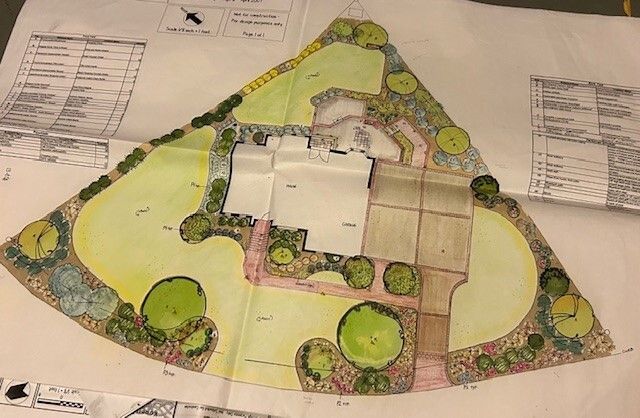Spring is one of my favorite seasons. It means that I can begin gardening and getting outside to appreciate the work we have done over the years on our yard. In a previous life I was a landscape designer, so I try hard to bring that knowledge of plants and design into our house and yard. Even though it’s been over 15 years since I’ve spent time at a drafting table designing landscapes for clients I still try to identify plants by their Latin name and look at both good and bad designs with a critical eye.

As a designer, I would meet with my clients to determine how they use their yard and what feeling they wanted to have when they were in their yard. I’d look at the views from in the house out, and from the street to the house. I’d measure and determine how the grade affected water flow. I’d visit during different times to identify sunny and shady spots. Only after I got to know the space would I think about plants and hardscaping.
Landscape design requires you to identify which plant is most appropriate for a given space, within the context of the whole design. That means considering the plant’s ultimate size and shape and the appropriate spacing so it doesn’t overcrowd its neighbors in five to seven years. You also have to consider the texture of the leaves, their color, and how it complements the plants and surrounding hardscapes. If you are creating a four-season garden, like we can have in Virginia, the bark and stem color become as important as the leaves and flowers to create seasonal interest.
Landscapes also include hardscaping, like patios, walls, and walkways. So much goes into picking the stone and brickwork which often become focal points of outdoor living spaces. And once all my design choices are put on an idea board, I can start drawing my vision. However, the cost always looms overhead so often blue stone might get switched out for a different stone or a manufactured brick; mid-sized trees are replaced with younger ones; and so on.
In many ways, landscape design is like a system selection. At Celent. we help our insurance clients select systems to meet their needs. We use a methodology that includes requirements gathering, determining shortlisted systems that meet the requirements, and matching up the right system at the right cost for our clients. The process is so similar that I often think of the skills I learned when designing a garden when evaluating the insurer’s needs against a system’s capabilities. How does the insurer plan to use the system, how do they see their operations in five to seven years, and will the system still fit the bill? How will this system integrate with the other systems? What other options exist if the cost is too high?
If you are thinking of replacing a system, adding a new one, or just want some advice on what to think about when starting the process, call Celent! We can help. And if you want some landscape design advice, I still have a few reference books on my bookshelf – I could lend them to you!






